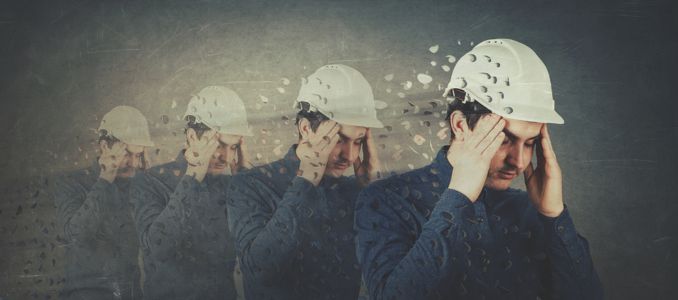
Building a Culture of Safety at Your Facility Starts with the Psychological
How psychological safety influences workplace injury prevention and offers strategies for safety professionals to foster more open, trust-based environments.
- By Glorianna Reeser
- May 01, 2025
Most folks think of workplace safety in terms of OSHA regulations, safety data sheets, and training sessions. But psychological safety is just as important. It’s the key to a culture of safety that empowers workers to report hazards, call out unsafe behavior, and offer constructive safety feedback without worrying about backlash.
Without a foundation of psychological safety, even the most well-intended safety programs can fail to create lasting change. But it’s never too late to start laying the groundwork at your own organization.
In this piece, I’ll explain how and highlight the unique role safety professionals play in fostering a psychologically safe environment. But first, let’s take a closer look at the key components of psychological safety and how they impact your safety program.
In the Workplace, Psychological Safety Has a Trickle-Down Effect
Imagine a construction worker who sees a loose electrical wire sparking near a high-traffic area but hesitates to report it. The crew is on a tight deadline, and they don’t want to be scolded by the floor supervisor for slowing down work.
A few days later, the wire short-circuits, leading to a small fire that forces an evacuation and damages equipment. It’s a massive setback for everyone. But more importantly, it’s an incident that could have been prevented if the worker had felt comfortable speaking up.
Scenarios like this one are all too common: one survey found workers who feel psychologically unsafe are 80 percent more likely1 to report a workplace injury that results in medical attention or time off.
That said, psychological safety can be challenging to measure: I’ve found that when workers don’t feel safe, they’re usually hesitant to report dangerous conditions at all. That further increases the risk of accidents or injuries.
But what happens when workers do feel psychologically safe? More often than not, they feel more motivated and make smarter decisions. What’s more, they feel empowered to speak up when something’s amiss. In fact, Google’s Project Aristotle found that psychological safety is the no. 1 determinant of team success2—even more than a strict team hierarchy with rigid rule enforcement.
How to Foster Psychological Safety in Your Organization
Despite the benefits I’ve outlined, many organizations struggle to create an environment that fosters psychological safety. Some of the most common barriers include:
- Top-down leadership styles: Focusing too much on leadership hierarchies can discourage honest feedback and tamp down engagement.
- Resistance to change: Entrenched workplace norms can keep new initiatives from catching on.
- Poor mental health awareness: It's tough for workers to be upfront about their mental health when they're worried about being judged.
To break down these barriers, I recommend encouraging leaders on the ground to:
- Engage in active listening. This can take the form of regular one-on-one check-ins, anonymous surveys, or structured listening sessions. The key is to meaningfully engage with workers' concerns, ask clarifying questions, and demonstrate an honest commitment to change.
- Practice vulnerability: To earn workers' trust, it's important for leaders to admit their own mistakes and show how they plan to learn going forward.
- Approach conflict constructively. How leaders handle conflict can have a serious impact on psychological safety. Consider investing in conflict resolution training, and encourage teams to welcome uncomfortable conversations. It's important to frame conflict as an opportunity for learning and growth.
- Foster a culture of respect. This means creating room for everyone's perspectives, no matter their position. Respect has to be ingrained in workplace interactions at every level.
With a proactive approach, organizations can create an environment where employees feel more valued and heard.
The Role of Safety Professionals: Moving Beyond Rule Enforcement
Safety professionals can play a unique role in fostering a psychologically healthy workplace. The key is to make psychological safety a fixture of your safety program.
My advice for safety professionals? Consider these three tips:
- Weave psychological safety into your safety education. From toolbox talks to microlearning modules, look for ways to educate workers about psychological safety and its importance.
- Clearly connect the psychological to the physical. Make sure workers understand how psychological safety directly influences physical safety at work. This will make it easier to achieve the team-wide understanding and buy-in you need to support a psychologically safe environment.
- Measure success. Engagement surveys can help you assess improvements in psychological safety. Keep an eye on physical safety indicators, too. An increase in, say, incident or near-miss reports could actually be a sign that workers feel more comfortable flagging safety concerns.
When your safety efforts focus on the psychological, you’ll find it easier to cultivate a workplace where employees don’t hesitate to take action on critical safety matters.
Your Safety Culture Depends on Psychological Safety
Trust and comfort are powerful motivators in the workplace. Without it, even the most well-intentioned safety initiatives will fall flat.
That’s why it’s so important to invest in fostering psychological safety. What you’ll unlock: a culture where employees feel more secure, engaged, and committed to the long-term safety of your team.
This article originally appeared in the April/May 2025 issue of Occupational Health & Safety.